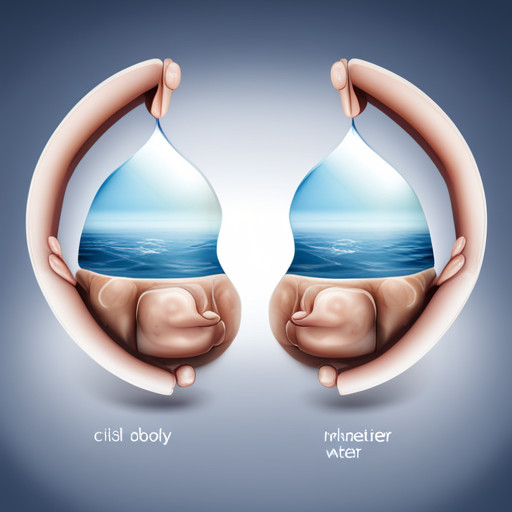From Exposure to Illness – Deep Dive into Case Studies of Toxic Water Effects
The burgeoning issue of toxic water pollution merits comprehensive examination.

This research paper delves into numerous case studies, underscoring the detrimental health impacts induced by exposure to contaminated water.
It assesses the causal correlation between toxic water and associated illnesses, while simultaneously exploring proactive solutions to mitigate this escalating environmental crisis.
Key Takeaways
- Toxic water pollution is a global public health issue with devastating effects on ecosystems and human populations.
- Industrial waste and agriculture runoff are major sources of toxic water pollution, containing heavy metals, pesticides, and nitrates.
- Consuming contaminated water can lead to waterborne diseases, chemical-related health effects, and chronic exposure can result in cognitive impairments and kidney damage.
- Case studies have shown that exposure to toxic water can result in illnesses such as cholera, arsenicosis, severe diarrheal illnesses, and skin lesions/cancers.
Understanding the Severity of Toxic Water Pollution

The severity of toxic water pollution presents a global public health issue, with numerous case studies revealing the devastating effects on ecosystems and human populations alike. The potent combination of hazardous chemicals, heavy metals, and untreated sewage in various bodies of water has resulted in a surge of waterborne diseases across continents. These sources of pollution are primarily industrial waste, agriculture runoff, and domestic waste.
Research indicates that these pollution sources release harmful substances into the environment that significantly degrade water quality. For instance, industrial waste often contains toxic heavy metals like lead or cadmium that can contaminate groundwater sources and pose severe health risks upon consumption. Agriculture runoff is another major contributor to toxic water pollution; high levels of nitrates from fertilizers infiltrate surface and ground waters leading to eutrophication – an excessive growth of algae which reduces oxygen levels for aquatic life.
Undeniably, one critical consequence triggered by this degradation in water quality is the proliferation of waterborne diseases. According to World Health Organization reports, 80% of all illnesses in developing countries link directly to poor water conditions exacerbated by such forms of contamination. Pathogens from untreated sewage can cause debilitating illnesses like cholera or typhoid fever while chemical pollutants may lead to long-term ailments such as cancers or neurological disorders.
Thusly, the domino effect created by toxic water pollution underscores its severity: starting with contamination at the source level leading ultimately to widespread disease among vulnerable populations - a cycle perpetuated without adequate interventions addressing both prevention and treatment measures.
Exploring Case Studies: Exposure to Toxic Water

Investigating real-life scenarios of individuals subjected to harmful aquatic environments presents valuable insights into the detrimental health impacts. Such studies provide compelling evidence on pollution sources and the severity of their implications, offering a detailed understanding of varying contaminant types.
Pollution sources can be broadly categorized as point and nonpoint sources. Point sources refer to pollutants discharged from identifiable locations such as factories or sewage treatment plants. Nonpoint sources, on the other hand, are diffuse in nature and encompass agricultural runoff, urban stormwater runoff, and atmospheric deposition.
The types of contaminants entering water bodies vary significantly based upon these pollution sources. Industrial waste often introduces heavy metals like lead or mercury into water systems while agricultural practices contribute pesticides and nitrates. These contaminants can have severe health ramifications when ingested or absorbed through dermal contact.
Research indicates that exposure to heavy metals may result in chronic diseases such as cancer or neurological disorders while pesticide ingestion can cause immediate poisoning symptoms or long-term developmental issues. Similarly, high nitrate levels in drinking water have been linked with methemoglobinemia, particularly in infants.
Overall, exploring case studies allows for a comprehensive analysis of the intricate relationship between toxic water exposure and disease prevalence. It underscores the urgency for effective mitigation strategies against diverse pollution sources whilst highlighting the need for robust screening methods to detect various contaminant types promptly.
Health Implications of Consuming Contaminated Water

Health implications arising from the consumption of contaminated water represent a critical area of study, particularly in understanding the links between specific pollutants and disease manifestation. Waterborne diseases, including cholera, typhoid and dysentery, are directly attributable to ingestion of water contaminated by fecal matter that contains pathogenic bacteria or viruses. Additionally, harmful chemical contaminants such as lead or mercury can result in detrimental health effects over prolonged exposure periods.
A deeper analysis indicates that waterborne diseases proliferate due to inadequate sanitation facilities and compromised water treatment processes. A direct correlation exists between instances of these diseases and regions with substandard contaminated water treatment protocols. For example, research findings have illustrated an increase in diarrheal diseases during monsoon seasons in regions lacking adequate waste management systems.
Furthermore, chronic exposure to chemically contaminated water has been linked to adverse health effects such as cognitive impairments from lead poisoning or kidney damage from excessive cadmium levels. Chemical contamination often originates from industrial effluents or agricultural runoffs entering the groundwater system without proper filtration.
To mitigate these risks, it is essential to adopt effective contaminated water treatment strategies which incorporate both biological and chemical filtering techniques. Moreover, implementing regular monitoring systems for early detection of contaminant presence can significantly reduce potential health hazards.
Case Study Analysis: Illnesses Caused by Toxic Water

Analyzing specific instances of diseases caused by contaminated water provides valuable insights into the severity and range of health implications, underscoring the urgent need for effective water treatment strategies. A comprehensive understanding of disease origin is crucial in advancing this analysis.
One such case involves cholera outbreaks, often traced to ingestion of water contaminated with Vibrio cholerae bacteria. The contamination sources are typically fecal matter from infected individuals. This bacterium's proliferation in untreated or inadequately treated drinking water has led to severe, sometimes fatal, diarrheal illnesses in many developing regions.
Another noteworthy example is arsenicosis, resulting from long-term exposure to high levels of naturally-occurring arsenic in groundwater – a primary source of drinking water in certain areas worldwide. Arsenicosis manifests as skin lesions initially but can lead to more serious complications including cancers.
In addition to bacterial and natural chemical contaminants, industrial pollution significantly contributes to disease origin linked with toxic waters. Heavy metals like lead, discharged from manufacturing industries into freshwater sources, have induced neurological disorders among exposed populations.
These cases underline not only the diversity of diseases arising from diverse contamination sources but also their potential for geographical ubiquity given ubiquitous risks associated with unsafe water consumption. Consequently, multi-pronged interventions involving rigorous monitoring and control of contamination sources alongside improved sanitation infrastructure become imperative for global public health.
Through these studies it becomes evident that an interdisciplinary approach integrating epidemiological surveillance with technological innovation is needed for devising robust solutions against toxic waters – a pressing environmental health concern warranting immediate attention.
Preventive Measures and Solutions: Addressing the Toxic Water Crisis

Preventive measures and solutions for addressing the contaminated water crisis encompass a broad spectrum of strategies, from technological innovations in water treatment to policy interventions that prioritize clean water accessibility. A significant component on this spectrum involves water filtration methods that are designed to eliminate harmful substances from contaminated sources. These methods employ varying mechanisms, such as reverse osmosis, activated carbon filtering, and ultraviolet sterilization.
Reverse osmosis is a technologically advanced method that removes virtually all health-related contaminants. This method forces water through a semipermeable membrane under pressure to filter out impurities at a microscopic level. Activated carbon filters, on the other hand, function by trapping contaminants within their pore structure while allowing purified water to flow through freely. Ultraviolet sterilization utilizes UV light to kill or incapacitate bacteria and viruses, making them harmless when consumed.
On another front of the spectrum lies policy interventions which seek to implement sustainable water practices. These interventions focus on promoting efficient use of available resources while ensuring minimal environmental impact. Strategies may include implementing policies that encourage rainwater harvesting or greywater recycling, thereby reducing demand for freshwater resources.
Additionally, stricter regulations can be enforced regarding industrial waste disposal into bodies of water–a prevalent cause of contamination–and can be complemented with regular monitoring activities aimed at early detection of contamination incidences.
Overall, tackling the toxic water crisis demands an integrative approach combining technical solutions with legislative efforts aimed at changing human behaviors towards more sustainable practices in relation to our precious life-sustaining resource - Water.
Frequently Asked Questions
What Are Some Psychological Effects of Living in Areas Affected by Toxic Water Pollution?
Exposure to toxic water pollution can result in significant mental health impacts, including stress, anxiety, and depression. Coping mechanisms vary widely but may include seeking medical help or community support.
How Do the Effects of Toxic Water Exposure Differ Between Children and Adults?
Exposure to toxic water demonstrates differing impacts on children and adults. Childhood Development Consequences include cognitive impairments, while adult immunity response typically manifests as various health disorders, showing a clear age-dependent toxicity variation.
What Are the Economic Implications for Regions Heavily Affected by Toxic Water Contamination?
Regions heavily affected by toxic water contamination face significant economic implications, including costs related to health care, Contamination Mitigation efforts, and potential loss of tourism or industry. Policy Implications must consider these multifaceted financial burdens.
How Do Different Types of Toxic Contaminants Affect Water Quality and Human Health Differently?
Different types of toxic contaminants, upon identification, display varied impacts on water quality and human health. The severity of effects necessitates distinct mitigation strategies to ensure optimal health and environmental safety outcomes.
Are There Any Specific Populations That Are More Susceptible to the Effects of Toxic Water?
Vulnerable demographics, including children, the elderly, and those with compromised immune systems, tend to exhibit greater susceptibility to toxic water effects due to inherent immune response variations among these populations.
Conclusion
In conclusion, a thorough analysis of various case studies has shown that toxic water pollution is a grave concern with severe health implications.
The correlation between exposure to contaminated water and the onset of illnesses is clear, demanding immediate action.
Consequently, developing and implementing effective preventive measures are paramount in addressing this crisis.
Further research on this topic can contribute significantly to finding sustainable solutions for maintaining water purity.

This post has been generated by AI and was not reviewed by editors. This is Not legal advice. Please consult with an attorney.




